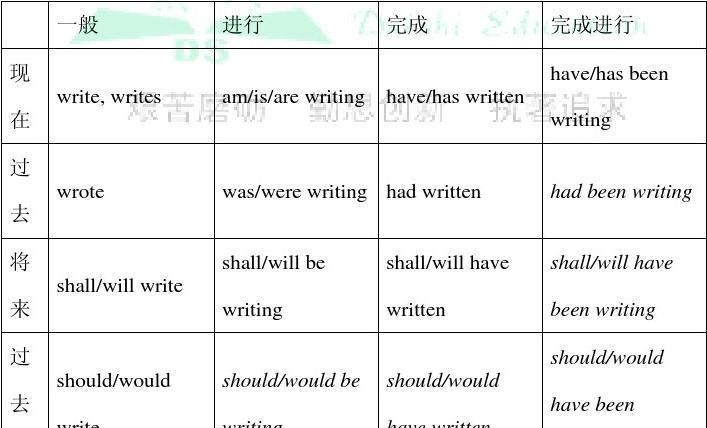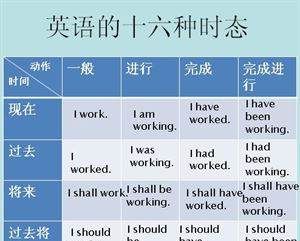本文目录
一般现在时的两种构成形式
记住:doesn't或don't后一定跟动词原形
isn't/aren't/am
not
可以跟名词,介词(比如in),形容词等,如果跟动词.后跟的动词要么是ing形式表示进行,动词不定式 to
do表示将来,要么是done表示被动.
而且你的第一个句子应该是:
Her
Father
isn't
in
Beijing.
不是"she's
father"


一般现在时的形式
一般现在时有三种形式如下
1、谓语是be(am/is/are)的一般现在时。
①肯定形式:主语+be+表语(形容词、名词充当表语)。
I am hungry
You are beautiful
He is a doctor

②否定形式:主语+be+not+表语(形容词、名词充当表语)。
I am not hungry
You aren't beautiful
He isn't a doctor
2、谓语是情态动词can/may.....+动词原形的一般现在时。
①肯定形式:主语+情态动词can/may.....+动词原形+宾语。
I can finish my homework
②否定形式:主语+情态动词can/may.....+not+动词原形+宾语。
I can't finish my homework.
③一般疑问句形式:情态动词Can/May.....+主语+动词原形+主语+宾语。
肯定回答是:Yes,主语+情态动词. 否定回答是:No, 主语+ 情态动词+not.
—Can you finish your homework?
—Yes,I can./No, I can't

3、谓语动词是实义动词(及物动词或不及物动词)的一般现在时。
①肯定形式:“主语+及物动词+宾语”或“主语+不及物动词”。
She has a little brother
她有一个弟弟。
The sun rises in the east
太阳从东方升起。
②否定形式:“主语+don't/doesn't+及物动词+宾语”或“主语+don't/doesn't+不及物动词”。
She doesn't have a little brother
她没有弟弟。
英语一般现在时基本结构造句
一般现在时的基本结构主要有两种形式:
(1)be型:句子的谓语动词只有be(am,is或are):
a.肯定句中,只出现be,如:
I am a student.我是一名学生.
b.否定句中,要在be后面加not,如:
She isn't a teacher.她不是教师.
c.一般疑问句,要将be放在句子开头(注意句首字母大写),句尾用问号,答语用Yes,主语+be.或No,主语+be+not.如:
—Are you ready?—你准备好了吗?
—Yes,I am.—是的,我准备好了.
(—No,I'm not.—不,我没准备好.)
(2)实义动词型:句中的谓语动词为实义动词(也叫行为动词):
a.肯定句中,只出现实义动词,如:
I get up in the morning.我早晨起床.
b.否定句中,要在实义动词前面加do(does)+not,do(does)作助动词,本身无意义,常与not缩写成don't(doesn't),如:
I don't like vegetables.我不喜欢蔬菜.
c.一般疑问句,要在句子开头加助动词Do(does),句尾用问号,简略答语用Yes,主语+do(does).或No,主语+do(does)+not.如:
—Do you like oranges?—你喜欢桔子吗?
—Yes,I do.—是的,我喜欢.
(—No,I don't.—不,我不喜欢.)

英语中的十六种时态
(1)一般现在时
基本形式(以do为例): 第三人称单数:does(主语为非第三人称单数);
肯定句:主语+动词原形+其他;
He works for us.
否定句:主语+don‘t/doesn't+动词原形+其他;
He doesn't work for us.
一般疑问句:Do/Does+主语+动词原形+其他。
肯定回答:Yes,(+ 主语+do/does).
否定回答:No,(+主语+don't/doesn't.)
特殊疑问句:疑问词+一般疑问句语
Does he work for us?
Yes, he does.
No, he doesn't
What does he do for us?
He works for us.
(2)一般过去时
be动词+行为动词的过去式
否定句式:在行为动词前加didn‘t,同时还原行为动词,或was/were+not;
was或were放于句首;用助动词do的过去式did提问,同时还原行为动词
例如: Did he work for us?
He didn't work for us.
He worked for us.
(3)一般将来时
am/are/is+going to+do 或
will/shall+do
am/is/are/about to + do
am/is/are to + do;
一般将来时的表达方法
be going to +动词原形
be +不定式,be to+动词原形,be about to +动词原形
be able to +不定式
be about to+动词原形
will + 动词原形;
例如:He is going to work for us.
He will work for us;
He is coming.这是特殊的用一般现在时 表达 将来时态 的例子!!
(4)过去将来时
be(was,were)going to+动词原形
be(was,were)about to+动词原形
be(was,were)to+动词原形
肯定句:主语+be(was,were)going to+动词原形~.
否定句:主语+be(was,were)not going to+动词原形~.
疑问句:Be(Was,Were)+主语+going to+动词原形~?
肯定句:主语+would(should)+动词原形~.
否定句:主语+would(should)not+动词原形~.
疑问句:Would(Should)+主语+动词原形~?
He would work for us.
(5)现在进行时
主语+be+v.ing〔现在分词〕形式(其中v表示动词)
表示现在正在进行的动作或最近在做的事。
例如:I am buying a book.
第一人称+am+doing+sth
第二人称+are+doing +sth (doing是泛指所有的v-ing形式)
第三人称+is+doing+sth
例:He is working.
(6)过去进行时
肯定句:主语+was/were+doing+其它
否定句:主语+was/were+not+doing+其它
一般疑问句及答语:Was/Were+主语+doing+其它 ;答语:Yes,I主语+was/were./No,I主语+wasn't/weren't.
特殊疑问句:特殊疑问词+was/were+主语+doing+其它
He was working when he was alive.
(7)将来进行时
主语+will + be +现在分词
He will be working for us.=He will work for us.
(8)过去将来进行时
should(would)+be+现在分词
He said that he would be working for us.=He said that he would work for us.
(9)现在完成时
基本结构:主语+have/has+过去分词(done)
①肯定句:主语+have/has+过去分词+其他
②否定句:主语+have/has+not+过去分词+其他
③一般疑问句:Have/Has+主语+过去分词+其他
④特殊疑问句:特殊疑问词+一般疑问句(have/has+主语+过去分词+其他
He has worked for us for ten years.
Has he worked for us for ten years.
(10)过去完成时
基本结构:主语+had+过去分词(done)
①肯定句:主语+had+过去分词+其他
②否定句:主语+had+not+过去分词+其他
③一般疑问句:Had+主语+过去分词+其他
肯定回答:Yes,主语+had
否定回答:No,主语+hadn't
④特殊疑问句:特殊疑问词+一般疑问句(had+主语+过去分词+其他)
语法判定:
( 1 ) by + 过去的时间点。如:
I had finished reading the novel by nine o'clock last night.
( 2 ) by the end of + 过去的时间点。如:
We had learnt over two thousand English words by the end of last term.
( 3 ) before + 过去的时间点。如:
They had planted six hundred trees before last Wednesday.
(11)将来完成时
(shall)will+have+动词过去分词
before+将来时间或by+将来时间
before或by the time引导的现在时的从句
He will have worked for us.=He will work for us.
(12)过去将来完成时
should / would have done sth.
He said that he would have worked for us.=He said that he would work for us.
(13)现在完成进行时
基本与现在完成时相同,但是现在完成进行时只能表示仍然持续的概念
have/has been +-ing 分词
He has been working for us for ten years.=He has worked for us for ten years.
(14)过去完成进行时
had been +-ing 分词
He said that he had been working for us for ten years.=He said that he had worked for us for ten years.
(15)将来完成进行时
主语+ shall/will have been doing
He will have been working for us.=He will work for us.
翻译为:他最近一直在为我们工作(过去在工作,现在在工作,将来还会工作)
(16)过去将来完成进行时
should+have been+现在分词用于第一人称
would have been+现在分词用于其他人称
He said that he would have been working for us.=He said that he would work for us.
以上就是关于一般现在时动词的两种形式 ,一般现在时的两种构成形式的全部内容,以及一般现在时动词的两种形式 的相关内容,希望能够帮到您。
